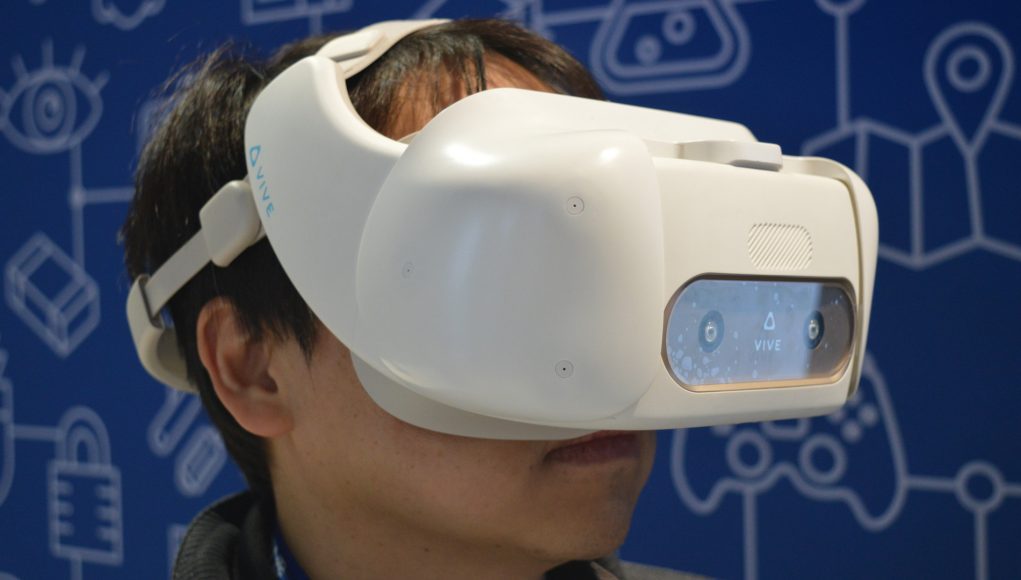Vive Wave is HTC’s open platform that offers interoperability between several classes of mobile VR headsets and accessories, something the company hopes will help unite a fragmented market. Although with greater choice in VR accessories comes the task of understanding the key differences between them. Enter FinchShift and Chirp, two different solutions to the same problem: bringing 6DOF controllers to Vive Focus.
As early entrants into the 6DOF standalone headset segment, both Lenovo Mirage Solo and HTC Vive Focus come with a single 3DOF controller in the box, making for a notable mismatch in how you move your head in room-scale space and how you move your controller (rotation only).
At CES last month, I got a chance to try out both of the officially supported 6DOF controllers for Vive Focus back-to-back, FinchShift from Finch Technologies and Chirp from TDK’s Chirp Microsystems.
Both controllers offer what you might call ‘casual-level’ input—neither match the precision of what we’ve come to expect from the current bar set by Oculus Rift and HTC Vive. Admittedly, it’s a very different playing field though, with power consumption at the top of the list, which is driving these companies to stay well away from Vive Focus’ optical tracking standard in pursuit of two approaches that are both basestation-free and light on computational & power requirements.
Chirp – Ultrasonics Showing Promise
The Chirp controllers are based on the company’s SonicTrack tech, which fuses ultrasonic and IMU sensor data to provide position and orientation tracking, giving the motion controllers a suitably wide tracking volume.
The company maintains its 180+ degree tracking volume extends to a maximum of 1.2 meters away (~4 feet), or well outside the average arm’s length of reach.
The system is essentially composed of two main parts, the faceplate receiver/emitter which plugs into Vive Focus’ USB port, and the controllers; both the controllers and faceplate house an array of the company’s CH-101 ultrasonic emitters.
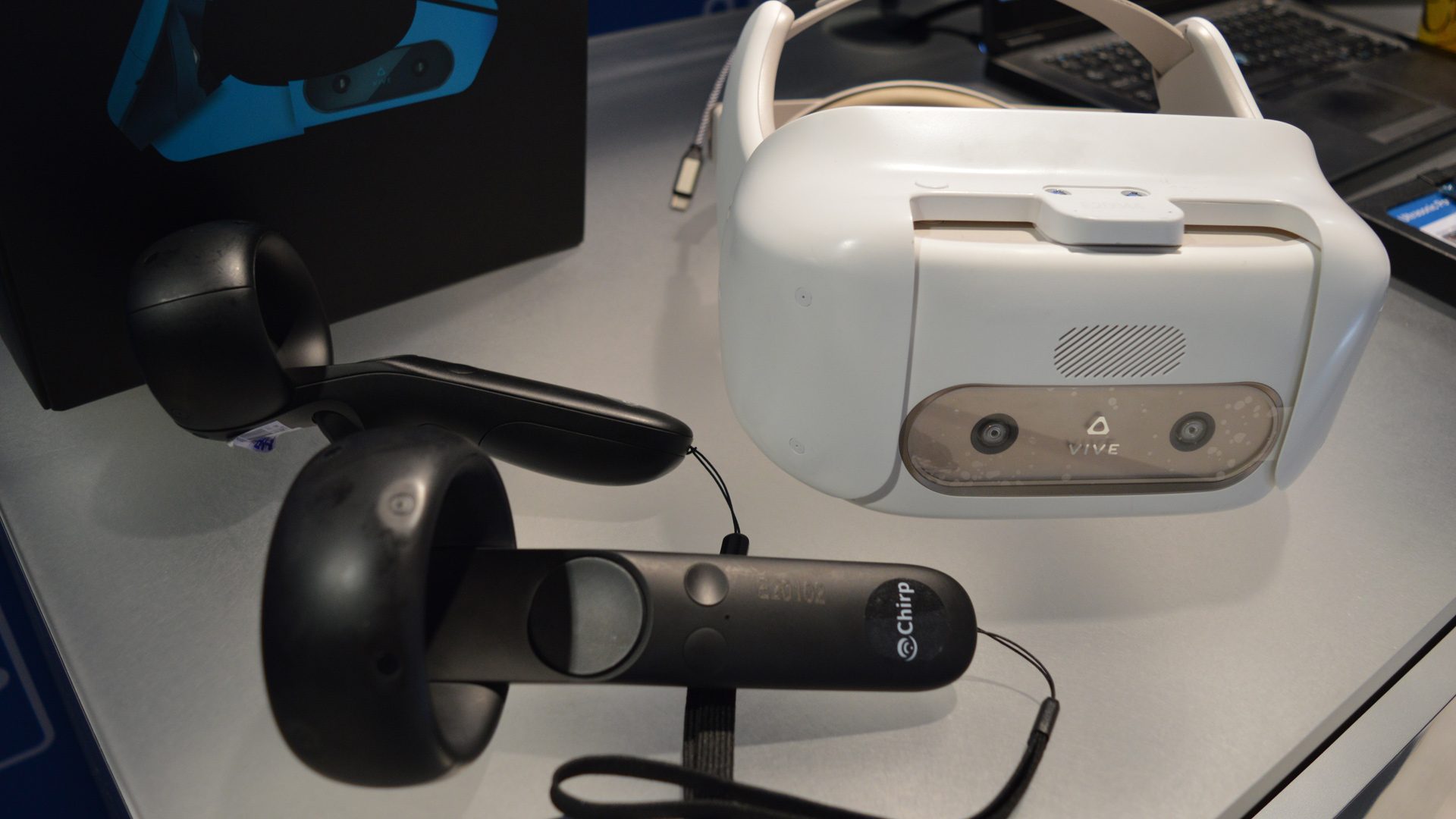
Calibration A pairing process was done beforehand by a TDK spokesperson, so I didn’t have a chance to find out what exactly needs to be done to get it ready (see update below). It was quick enough though, and was easily passed off to me for a hitch-free start that appeared to line up with my hands’ actual position.
The size of the tracking cone is difficult to substantiate in a single-player game where you can’t see what it looks like when you do inevitably lose positional tracking by putting your hands behind your back or covering up the emitters, although it’s clearly outside of the user’s in-game field of view by a large enough margin to not be noticeable.
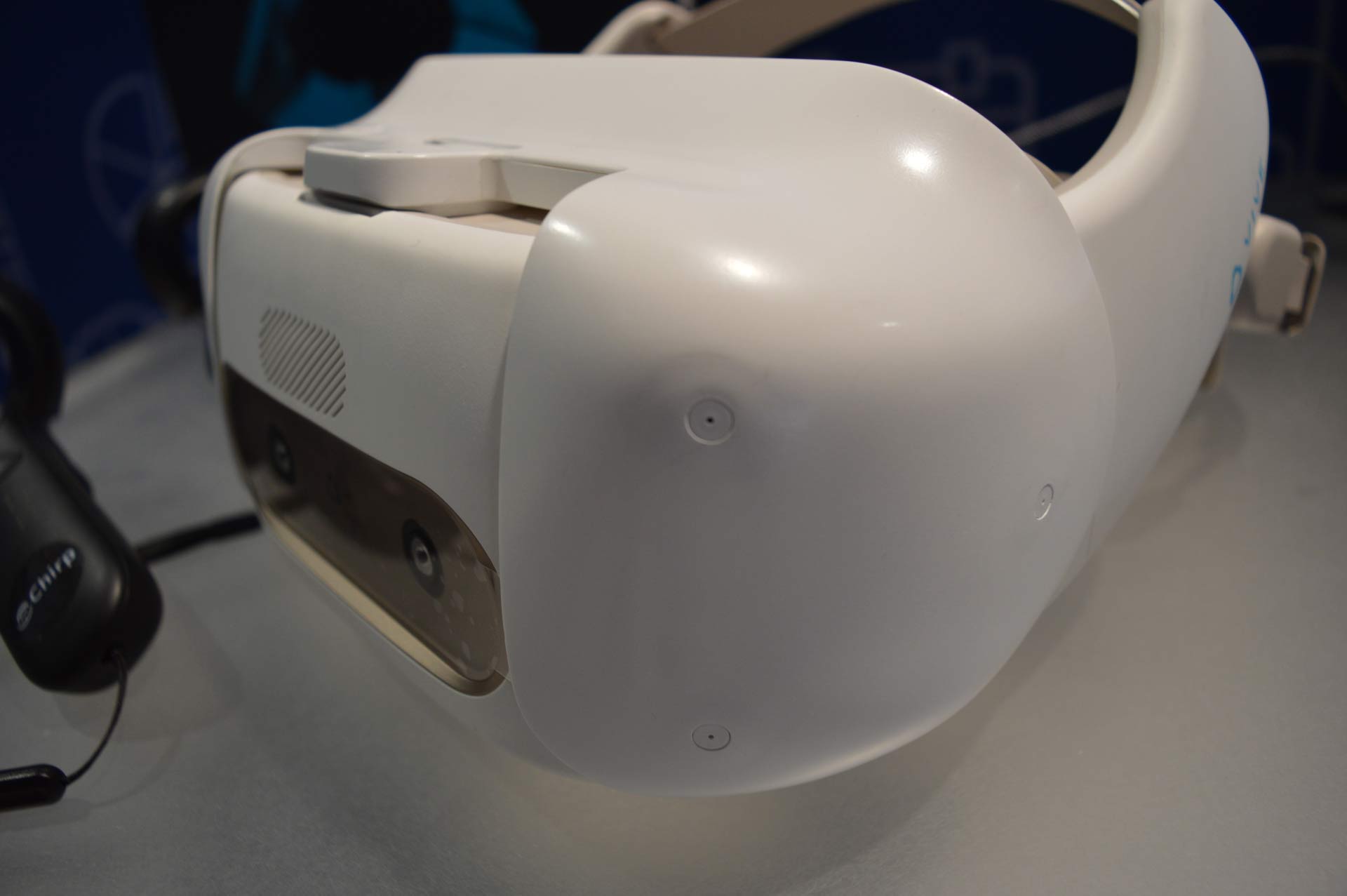
To that effect, I was actually able to shoot a gun from the hip when looking straight forward, showing that it’s large enough to accommodate holstering actions at the very least. The true test of the controller’s tracking volume invariably will come in social VR environments that use inverse kinematics (IK) to create full-bodied avatars so you can directly see when your controller leaves the positional tracking cone.
As noisy and chaotic as the show floor was, I was told there wasn’t really anything there that would throw off the controller’s tracking, as the company’s ultrasonic time-of-flight tech works well above even what even a dog can hear.
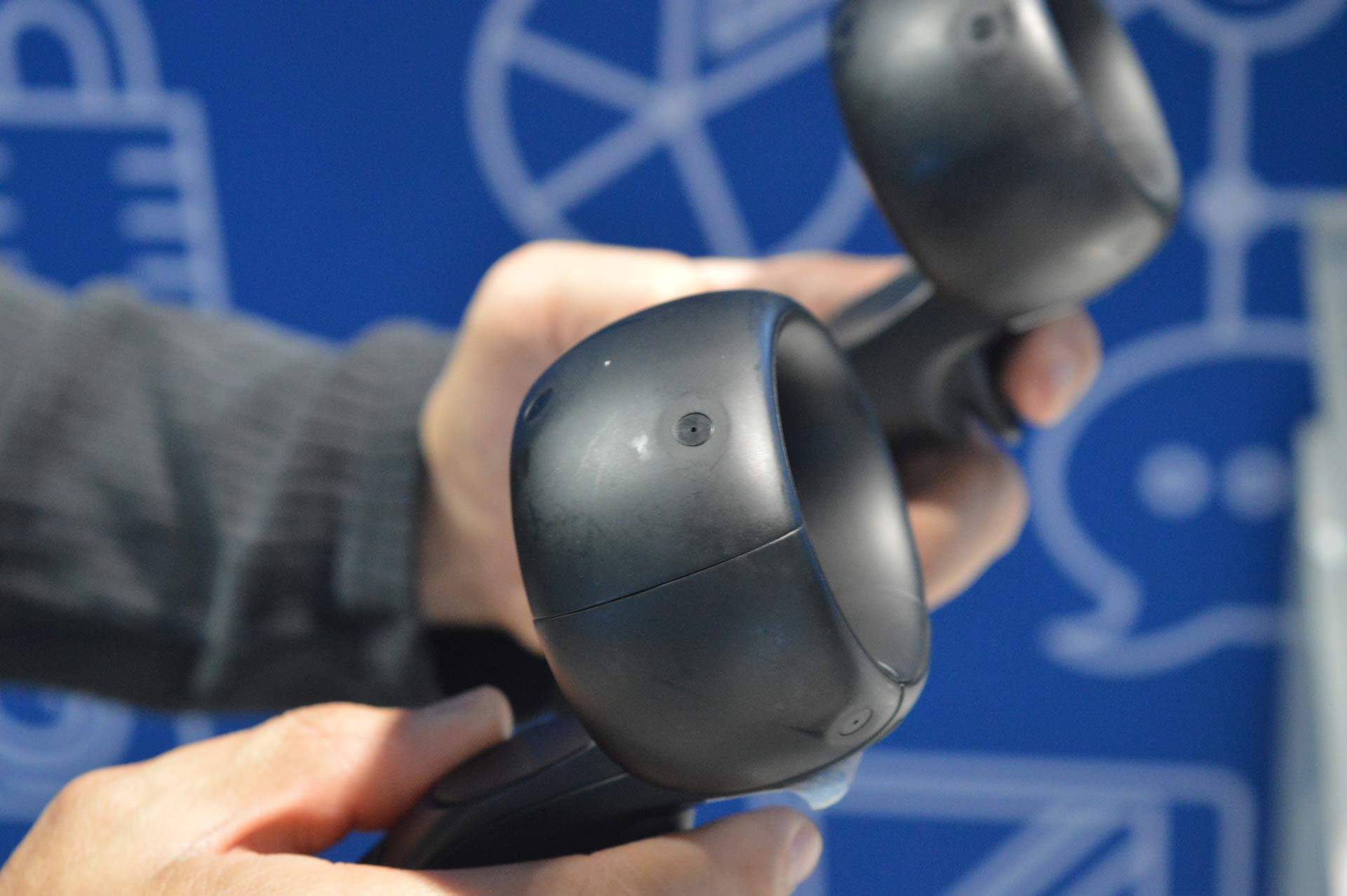
It’s easy to see why HTC tapped Chirp as for its official HTC Vive 6DOF developer kit: it works reasonably well, is low enough latency for casual applications, and has pretty solid positional tracking, something I wasn’t able to break after spending a good amount of time in both a shooting and a sword fighting game. Jitter was more than what I’ve seen on Windows VR headsets, but much less than when I first saw Chirp when it was integrated into Pico Neo at CES a year ago.
That said, I was never thrown into something I play often like Beat Saber (2018) to really get a feel for the controller’s tracking latency, so just how it stands up to even PS Move or Windows VR headsets remains to be seen.
FinchShift – Full FOV, But Lacking Precision
FinchShift is slated to be sold by HTC soon as a part of an official 6DOF controller developer kit option, and has been certified by Qualcomm to work with their Snapdragon 845 VR Reference Design as well.
Like Chirp, FinchShift offers a basestation-less experience and 6DOF controller tracking, but that’s where the comparisons stop. As an IMU-based system that uses IK to approximate relative arm and hand position, FinchShift enjoys the ability to function with full 360 degree tracking—no faceplate required thanks to Bluetooth 4.2 wireless that sends data directly to the headset.
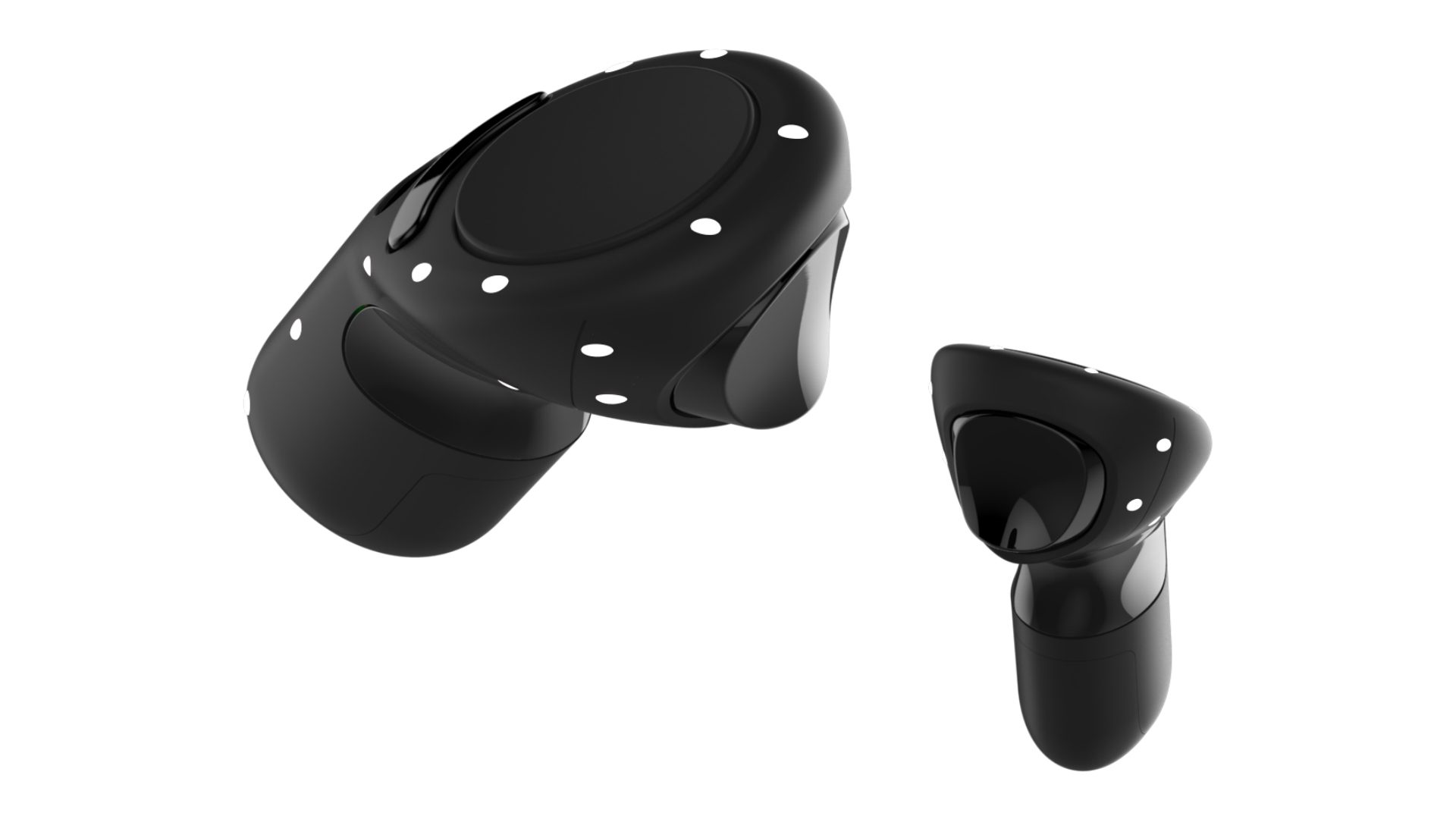
In fact, it’s such a low-power solution that Finch Technologies is promising upwards of 50+ hours of active operation time for the 100g (~3.5 oz) controllers.
The system includes two controllers and two armbands, the latter of which provides more tracking points so the IK system can do its job in estimating where your hands are in 3D space. Without the armbands, you’re left with a 3DOF controller which can be used for the same basic input as the one that comes stock with Vive Focus.
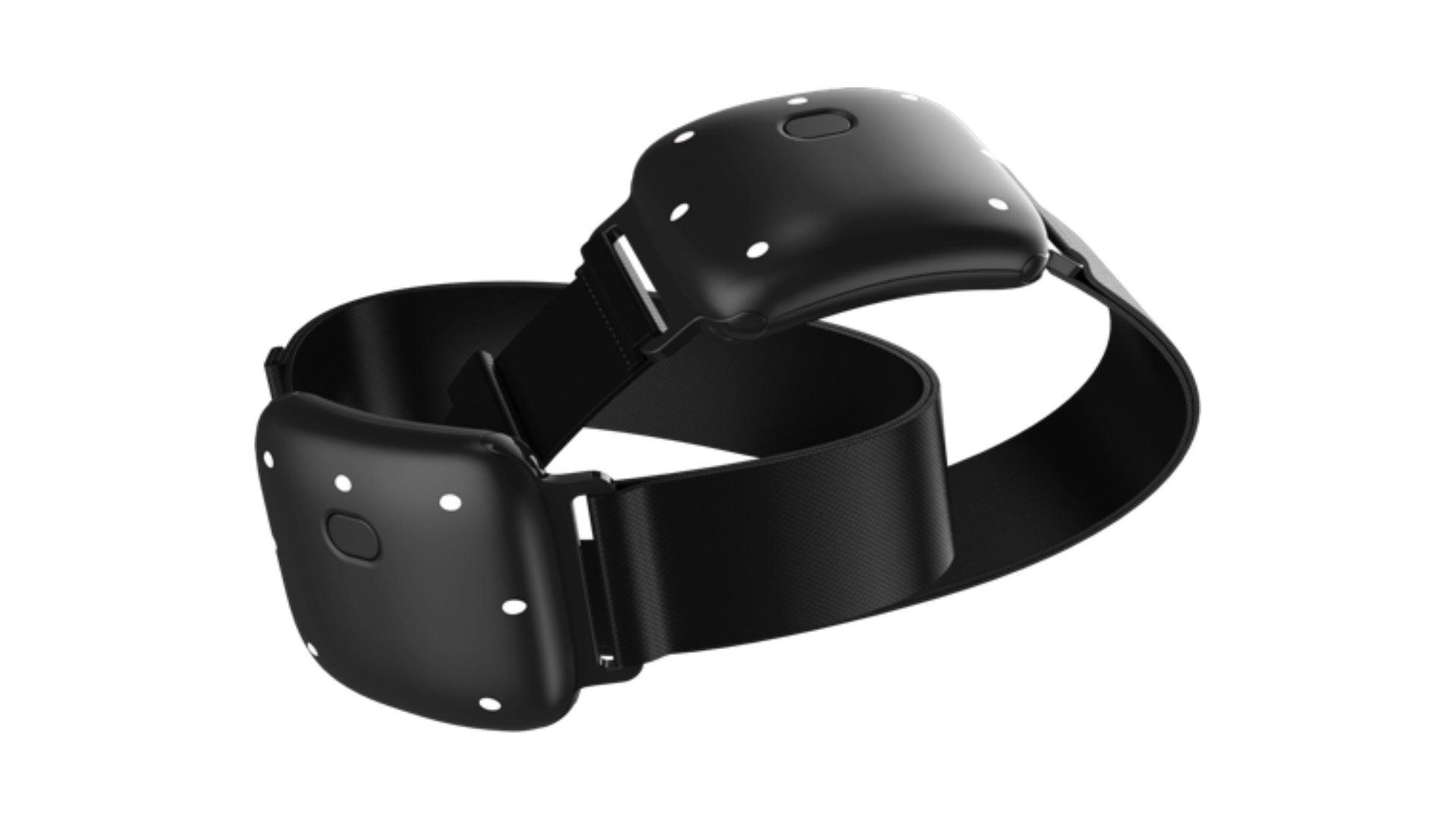
After a short chat about the company’s tech, I got a chance to try it for myself, strapping on the armbands and popping on the Vive Focus. Since calibration must be done on a person-to-person basis, I had to go through a brief set-up process which used Vive Focus’ on-board cameras to give me a visual guide so I could line my controllers up in the appropriate starting position. After trying several times to calibrate (more of the fault of the button mapping than the system itself), I was free to dive into my first VR app.
Note: FinchShift controllers feature white visual LED markers on the controllers, although these are only used to visually line up for initial calibration, and are not used for optical tracking on Vive Focus.
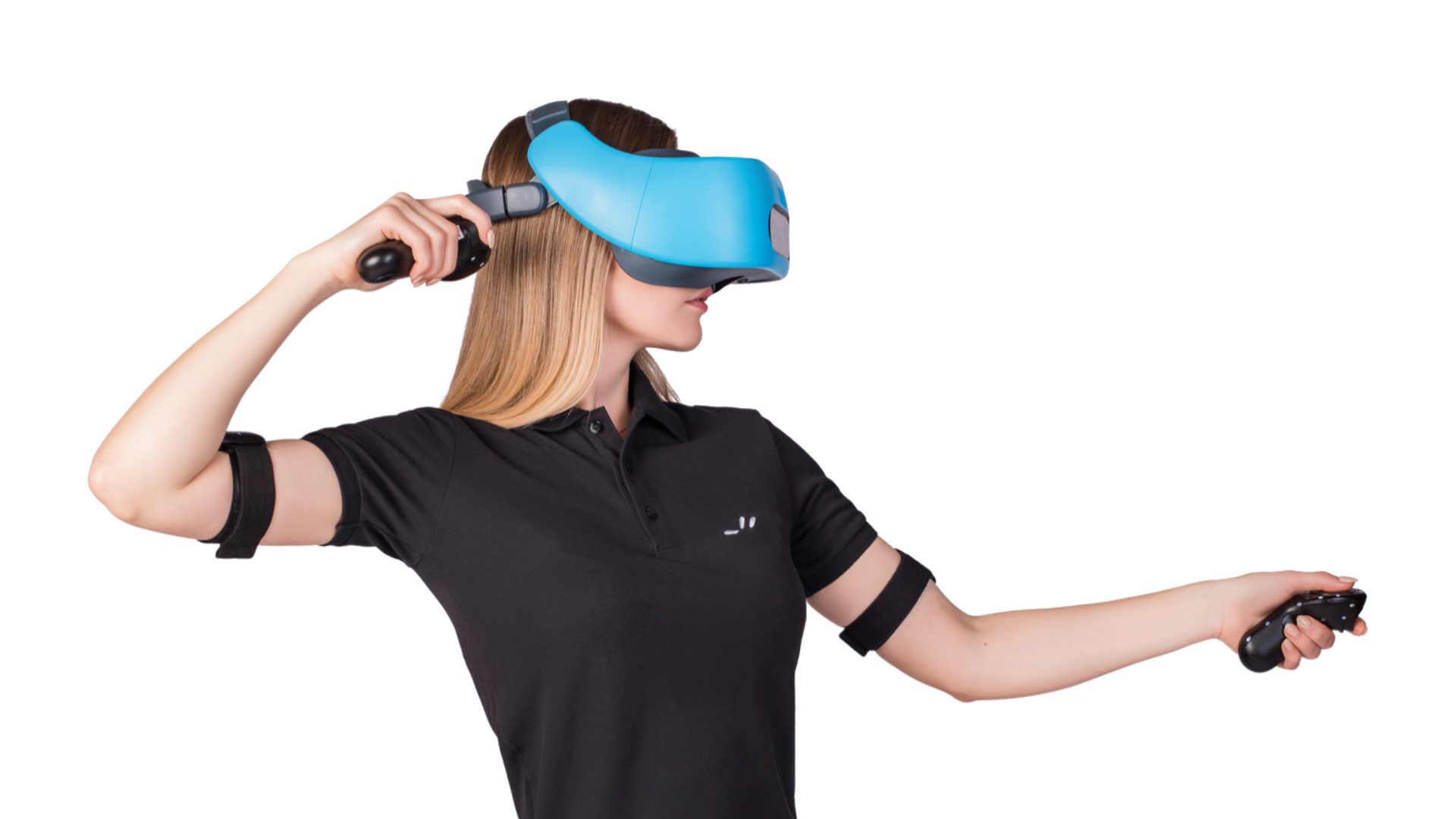
I was thrown into a drawing application similar to TiltBrush which gave me a good opportunity to see just how precise tracking was. Unfortunately, I wasn’t able to draw so much as a straight line, as considerable jitter and drifting prevented the controllers from matching my hands’ physical position.
The simple action of moving one hand from left to right and drawing a horizontal line resulted in a bumpy, jagged line. I repeated this process several times from several different angles, tracing my own arm at its side as a stable point, and putting my hands by my sides and raising them in attempt to draw a straight vertical line—simple stuff—but it always seemed the controllers were constantly doing their own thing.
After noticing this, I asked to re-calibrate, but after going through the process again, I was left with the same result as before.
Moving on to a sword-wielding game similar to Fruit Ninja VR, it became clear to me that 1:1 precision was the definite weak point of FinchShift, just as it is in practically all of the controllers or motion capture suits that use IMU-based tracking and IK to approximate absolute position. Slicing the jumping enemies was easy because I was making quick, broad strokes that required much less precision.
What’s Next?
To be clear, Vive Focus is in a pretty strange middle ground. In China it’s sold as a consumer headset. Everywhere else it’s sold for enterprise users, although HTC isn’t stopping regular consumers from buying the $600 headset.
Now that HTC and Google are offering additional 6DOF controller options for their respective standalone headsets, my sneaking suspicion is the companies are playing a game of catch-up with content developers in the face of Oculus Quest looming in the near future, which promises 6DOF headset tracking and 6DOF motion controllers that work extremely well in our various demos with the device.
Further speculation: both Google and HTC are likely developing full 6DOF standalone headsets. Following a less than impressive launch of Lenovo Mirage Solo and Vive Focus, they’re taking the Frankenstein approach with these developer kit add-ons and using them as defacto 6DOF developer platforms. If my assumption is right, both companies need developers to start either adapting older VR apps, or building full 6DOF VR applications from the ground-up soon, otherwise both platforms could miss out on a glut of content suited to full room-scale interactions.
Again, neither company has announced definite plans to create respective devices capable of competing with Oculus Quest, although you can bet we’ll right there when they do.
Update (12:40 PM ET): Antony Vitillo of VR/AR publication Skarred Ghost posted a helpful setup guide for the Chirp developer kit. According to Vitillo, what I saw at the booth was a simple pairing process, and not a bespoke calibration process. This has been corrected in the body of the article.

